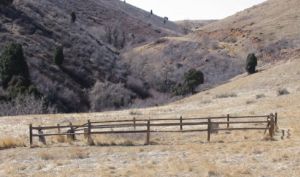|
What is an Abandoned Cemetery?An abandoned cemetery can be found anywhere, not just on the site of a ghost town. Most cities have burial places that have been abandoned and moved, incorporated into the town, or simply built over only to be be re-discovered by later generations. 
In 1991, an abandoned cemetery was re-discovered in the heart of Manhattan. The site was unearthed by construction workers, and the remains of 400 African slaves were identified. The site has revealed a great deal about the lives of slaves. Many cemeteries in large cemeteries are "moved," that is, the remains are moved to other cemeteries, and the land becomes used for another purpose. Denver's Acacia cemetery was only in use for a few years when those interred were moved. No one would recognize the area as a former cemetery, as it has been fully developed. Similar to the New York cemetery is the fate of Mount Prospect cemetery. The site of the shameful original city cemetery became Chessman park. Because dishonest workers hired to move the remains, many people remain interred underneath the park to this day. Most people don't think of these sites as abandoned cemeteries. More often, the term conjures up a more sorry site, that of a run-down area, with markers in a sad state. Often these forgotten sites are near ghost towns, or other forgotten properties. Cemeteries usually fall into three ownership categories. Public cemeteries owned by the government, private cemeteries managed by a management company, usually with perpetual care arrangements, and private cemeteries that no longer have active and regular care. Private cemeteries that aren't managed by a company can describe a wide variety of cemeteries. This category includes burial grounds for religious or fraternal organizations and private family burial plots. Because many an abandoned cemetery is on private land, they fall quickly into disrepair when the family or group leaves the area. in the case of ghost towns, not even a cemetery owned by the government is going to be maintained. After all, what government stays with an empty town? Another interesting wrinkle in the cemetery world is that there are dual care responsibilities. A cemetery company or owner is responsible for the grounds, but the family is the owner of the marker or monument. "Perpetual care" refers to the maintenance of the cemetery grounds; it doesn't insure that markers are maintained. The only instances in which a cemetery is responsible for damage to markers is when something on the grounds causes damage to the marker, as in, a tree falls and damages a headstone, or a volunteer tree springs up and disrupts the foundations of a mausoleum. It usually takes a great deal of money to maintain a cemetery, especially in Colorado's arid climate. For this reason, many Colorado cemeteries have never even attempted to cultivate large expanses of grass, leaving the natural forests of pine, or seas of prairie grass.
|
